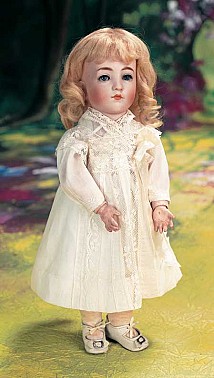A FINE PRETENDING TEA
Thursday, May 8, 2008Lots 1-374
May 8, 2008 in Chicago, IL
More than 400 fine antique dolls, ranging from French bébés, and highlighted by a petite kid-bodied A.T. from a private owner, to rare German bisque characters including Hertel and Schwab's 111, solemn faced girl, and an exceptional group of dolls formerly in the Cleveland Museum of Art collection. Also examples of early Edo period Japanese dolls, a fine group of Chinese wooden Door of Hope dolls, American cloth dolls, bisque mignonettes and Schoenhuts. 8.5" x 11". Softbound. 148 full-color pages.
Live Auction






















































































































































































































































































































































































